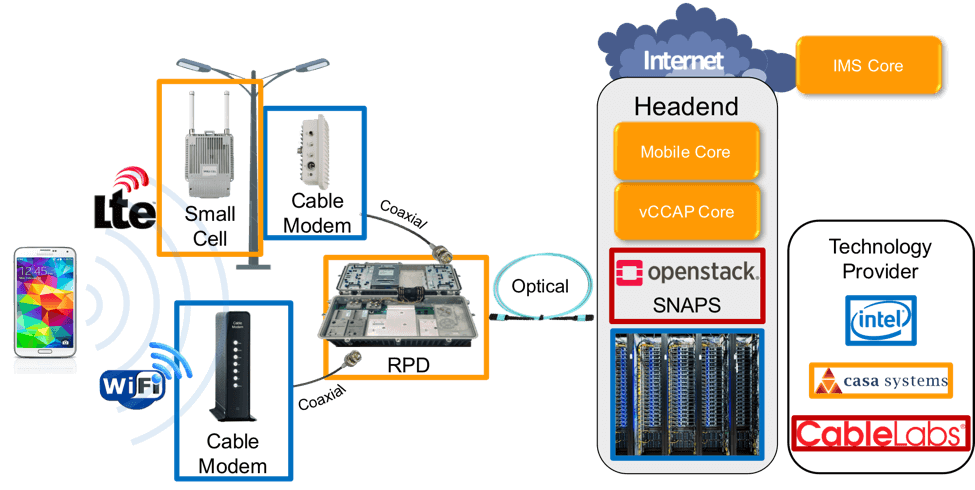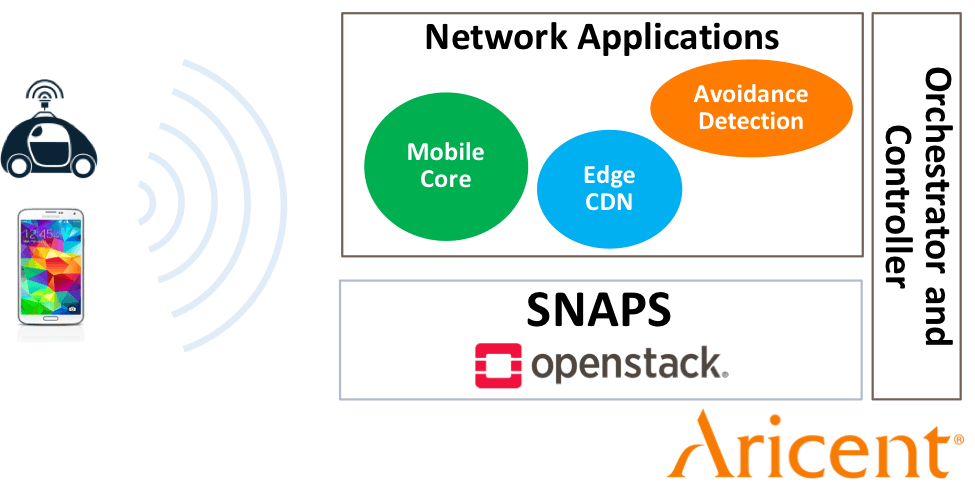Virtualization
NFV for Cable Matures with SNAPS

SNAPS is improving the quality of open source projects associated with the Network Functions Virtualization (NFV) infrastructure and Virtualization Infrastructure Managers (VIM) that many of our members use today. In my posts, SNAPS is an Open Source Collaborative Development Resource and Snapping Together a Carrier Grade Cloud, I talk about building tools to test the NFV infrastructure. Today, I’m thrilled to announce that we are deploying end-to-end applications on our SNAPS platform.
To demonstrate this technology, we recently held a webinar “Virtualizing the Headend: A SNAPS Proof of Concept” introducing the benefits and challenges of the SNAPS platform. Below, I’ll describe the background and technical details of the webinar. You can skip this information and go straight to the webinar by clicking here.
Background
CableLabs’ SDN/ NFV Application Development Platform and OpenStack project (SNAPS for short) is an initiative that attempts to accelerate the adoption of network virtualization.
Network virtualization gives us the ability to simulate a hardware platform in software. All the functionality is separated from the hardware and runs as a “virtual instance.” For example, in software development, a developer can write an application and test it on a virtual network to make sure the application works as expected.
Why is network virtualization so important? It gives us the ability to create, modify, move and terminate functions across the network.
Why SNAPS is unique
- Creates a stable, replicable and cost-effective platform: SNAPS allows operators and vendors to efficiently develop new automation capabilities to meet the growing consumer demand for self-service provisioning. Much like signing up for Netflix, self-service provisioning allows customers to add and change services on their own, as opposed to setting-up a cable box at home.
- Provides transparent API’s for various kinds of infrastructure
- Reduces the complexity of integration testing
- Only uses upstream OpenStack components to ensure the broadest support: SNAPS is open source software which is available directly from the public OpenStack project. This means we do not deviate from the common source.
With SNAPS, we are pushing the limits of open source and commodity hardware because members can run their entire Virtualized Infrastructure Manager (VIM) on the platform. This is important because the VIM is responsible for managing the virtualized infrastructure of a NFV solution.
Webinar: Proof of Concepts
We collaborated with Aricent, Intel and Casa Systems to deploy two proof of concepts that are reviewed in the webinar. We chose these partners because they are leading the charge to create dynamic cable and mobile networks to keep up with world’s increasing hunger for faster, more intelligent networks tailored to meet customers' needs.
Casa and Intel: Virtual CCAP and Mobile Cores
CableLabs successfully deployed a virtual CCAP (converged cable access platform) core on OpenStack. Eliminating the physical CCAP provides numerous benefits to service providers, including power and cost savings.
Casa and Intel provided hardware and Casa Systems provided the Virtualized Network Function (VNFs) which ran on the SNAPS platform. The virtual CCAP core controls the cable plant and moves every packet to and from the customer sites. You can find more information about CCAP core in Jon Schnoor’s blog post “Remote PHY is Real.”

Advantages of Kyrio’s NFV Interop Lab
For the virtual CCAP demo, the Kyrio NFV Interop Lab provided a collaborative environment for Intel and Casa to leverage the Kyrio lab and staff to build and demonstrate the key building blocks for virtualizing the cable access network.
The Kyrio NFV Interop Lab is unique. It provides an opportunity for developers to test interoperability in a network environment against certified cable access network technology. You can think of the Kyrio lab as a sandbox for engineers to work and build in, enabling:
- Shorter development times
- Operator resources savings
- Faster tests, field trials and live deployments
Aricent: Low Latency and Backhaul Optimization
With Aricent we had two different proof of concepts. Both demos highlighted the benefits of having a cloud (or servers) at the service provider edge (less than 100 miles from a customer’s home):
- Low latency: We simulated two smart cars connected to a cellular network. The cars used an application running on a cloud to calculate their speed. If the cloud was too far away, a faster car would rear end a slower car before it was told to slow down. If the cloud was close, the faster car would slow down in time to prevent rear-ending the slower car.
- Bandwidth savings: Saving data that will be used by several people in a closer location can reduce the amount of traffic on the core network. For example, when someone in the same neighborhood watches the same video, they will see a local copy of the video, rather than downloading the original from the other side of the country.

The SNAPS platform continues CableLabs’ tradition of bringing leading technology to the cable industry. The collaborations with Intel, Aricent and Casa Systems were very successful because:
- We demonstrated end-to-end use cases from different vendors on the same version of OpenStack.
- We identified additional core capabilities that should be a part of every VIM. We have already incorporated new features in the SNAPS platform to better support layer 2 networking, including increasing the maximum frame size (or MTU) to comply with the DOCSIS® 3.1 specification.
In addition to evolving these applications, we are interested in collaborating with other developers to demonstrate the SNAPS platform. Please contact Randy Levensalor at r.levensalor@cablelabs.com for more information.

Don’t forget to subscribe to our blog to read more about how we utilize open source to develop quickly, securely, and cost-effectively.



